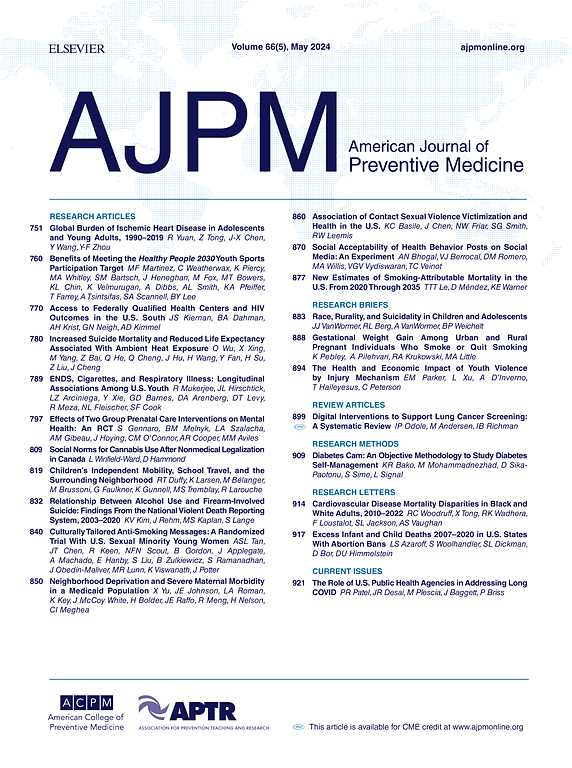Relationship between Contrast-Enhanced Ultrasound Characteristics of Carotid Plaques, Carotid Stenosis Severity, and Transient Ischemic Attack
IF 4.5
2区 医学
Q1 MEDICINE, GENERAL & INTERNAL
引用次数: 0
Abstract
Introduction
To investigate the correlation between contrast-enhanced ultrasound (CEUS) characteristics of carotid plaques, degree of carotid stenosis, and transient ischemic attack (TIA), and to establish a risk stratification model based on a preventive medicine framework for guiding clinical interventions.
Method
A retrospective study was conducted on 112 patients with carotid atherosclerosis from January 2020 to June 2023, categorized into mild (<50%), moderate (50%-70%), and severe (>70%) stenosis groups. CEUS was used to evaluate plaque enhancement patterns (homogeneous/heterogeneous) and intraplaque neovascularization grades (0-III). Associations with stenosis severity and TIA incidence were analyzed by integrating preventive medicine risk factors (blood pressure, lipid levels, smoking history).
Results
The severe stenosis group showed significantly higher proportions of heterogeneous enhancement (78.3% vs. 42.1%) and grade III neovascularization (65.2% vs. 15.8%) compared to the mild group (P<0.01). Multivariate logistic regression identified heterogeneous enhancement (OR=3.12, 95%CI 1.45-6.71) and grade III neovascularization (OR=4.85, 95%CI 2.33-10.09) as independent risk factors for TIA. ROC analysis demonstrated that combining CEUS parameters with preventive medicine indicators (Framingham Risk Score) improved the AUC for TIA prediction to 0.91 (sensitivity 86.7%, specificity 83.2%).
Discussion
CEUS characteristics effectively assess carotid plaque vulnerability and correlate with stenosis severity and TIA occurrence, providing imaging evidence for early clinical intervention. The established "imaging-clinical" risk stratification model (low, intermediate, high risk) provides guidance for preventive medicine practice.
颈动脉斑块超声造影特征、颈动脉狭窄严重程度与短暂性脑缺血发作的关系
目的探讨颈动脉造影(CEUS)特征与颈动脉狭窄程度、短暂性脑缺血发作(TIA)的相关性,建立基于预防医学框架的风险分层模型,指导临床干预。方法对2020年1月~ 2023年6月收治的112例颈动脉粥样硬化患者进行回顾性研究,分为轻度(50%)、中度(50% ~ 70%)和重度(70%)狭窄组。超声造影用于评估斑块增强模式(均匀/非均匀)和斑块内新生血管等级(0-III)。通过整合预防医学危险因素(血压、血脂水平、吸烟史)分析狭窄严重程度和TIA发生率的相关性。结果与轻度组相比,重度狭窄组异质强化(78.3% vs. 42.1%)和III级新生血管(65.2% vs. 15.8%)的比例显著高于轻度组(P<0.01)。多因素logistic回归发现异质性增强(OR=3.12, 95%CI 1.45-6.71)和III级新生血管(OR=4.85, 95%CI 2.33-10.09)是TIA的独立危险因素。ROC分析显示,超声造影参数与预防医学指标(Framingham Risk Score)相结合可将TIA预测的AUC提高至0.91(敏感性86.7%,特异性83.2%)。超声造影特征可有效评估颈动脉斑块易损,并与狭窄严重程度和TIA发生相关,为早期临床干预提供影像学依据。所建立的“影像-临床”风险分层模型(低、中、高风险)为预防医学实践提供了指导。
本文章由计算机程序翻译,如有差异,请以英文原文为准。
求助全文
约1分钟内获得全文
求助全文
来源期刊

American Journal of Preventive Medicine
医学-公共卫生、环境卫生与职业卫生
CiteScore
8.60
自引率
1.80%
发文量
395
审稿时长
32 days
期刊介绍:
The American Journal of Preventive Medicine is the official journal of the American College of Preventive Medicine and the Association for Prevention Teaching and Research. It publishes articles in the areas of prevention research, teaching, practice and policy. Original research is published on interventions aimed at the prevention of chronic and acute disease and the promotion of individual and community health.
Of particular emphasis are papers that address the primary and secondary prevention of important clinical, behavioral and public health issues such as injury and violence, infectious disease, women''s health, smoking, sedentary behaviors and physical activity, nutrition, diabetes, obesity, and substance use disorders. Papers also address educational initiatives aimed at improving the ability of health professionals to provide effective clinical prevention and public health services. Papers on health services research pertinent to prevention and public health are also published. The journal also publishes official policy statements from the two co-sponsoring organizations, review articles, media reviews, and editorials. Finally, the journal periodically publishes supplements and special theme issues devoted to areas of current interest to the prevention community.
 求助内容:
求助内容: 应助结果提醒方式:
应助结果提醒方式:


